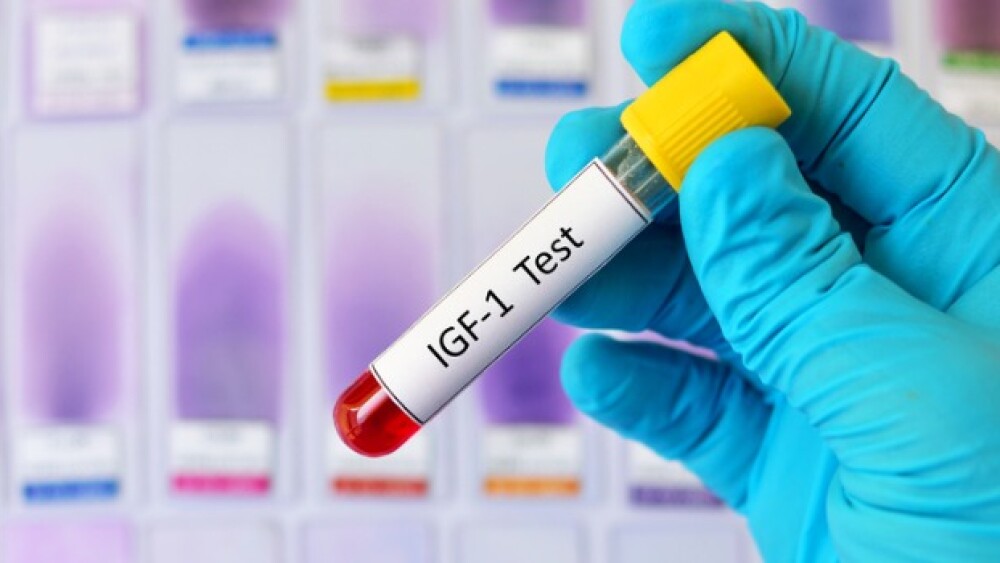The California pharma is building up to its first-ever approval with promising late-stage data for its once-daily investigational acromegaly pill paltusotine, an alternative to the injectable standard of care.
Pictured: Test-tube containing a patient’s sample for an IGF-1 test/iStock, jarun011
Crinetics Pharmaceuticals’ oral investigational drug paltusotine met its primary endpoint and all secondary endpoints in the Phase III PATHFINDR-1 study of acromegaly patients, the California pharma company announced Sunday.
Among the paltusotine-treated patients, 83% were able to keep their insulin-like growth factor 1 (IGF-1) levels within the upper limit of normal, as compared to only 4% of placebo comparators. This effect was strongly statistically significant, with a p-value less than 0.0001, according to the company’s announcement.
Paltusotine also met all its key secondary endpoints, including change in IGF-1 levels, improvements in acromegaly symptoms and the proportion of participants who maintained growth hormone (GH) levels below 1.0 ng/mL.
These data from PATHFINDR-1 demonstrate that paltusotine could induce reliable and durable disease control in patients with acromegaly who switch from the injectable standard of care, Crinetics CEO Scott Struthers said in a statement.
“If approved, paltusotine could address patients’ unmet need for a simple, oral, once-daily therapy,” Struthers said. It would also be Crinetics’ first product to reach the market.
Acromegaly is a rare disease and serious hormonal disorder that often arises due the presence of pituitary adenoma, a benign tumor in the pituitary gland. This results in the excess production of GH, which in turn triggers the surplus secretion of IGF-1 from the liver.
Persistently high concentrations of IGF-1 and GH give rise to the symptoms of acromegaly, including headaches, joint pains, severe sweating, overgrowth of bone and cartilage and enlargement of the heart, liver and other organs. When left unchecked, acromegaly can have debilitating effects on patients’ functioning and quality of life and can lead to death.
The standard initial treatment for acromegaly is surgical removal of pituitary adenoma. However, approximately 50% of patients are not eligible for surgery and must settle for monthly injections of depot somatostatin, which often cause pain and injection site reactions.
Paltusotine, a selectively targeted somatostatin receptor type 2 (SST2) agonist, offers an oral and once-daily alternative to the injectable treatment. By activating SST2 in pituitary tumors, the drug candidate dampens the secretion of GH and IGF-1, according to a video from Crinetics.
To verify its therapeutic effects, Crinetics is running the PATHFINDR clinical development program, which includes PATHFINDR-1. Full analysis of this study is currently ongoing and will be presented at upcoming medical meetings. A second study, dubbed PATHFINDR-2, will test paltusotine in treatment-naïve acromegaly patients who are not currently undergoing any medical therapy.
PATHFINDR-2 is fully enrolled with topline data expected in the first quarter of 2024.
“We intend to seek regulatory approval as quickly as possible once we complete the PATHFNDR-2 study early next year,” Struthers said.
Tristan Manalac is an independent science writer based in Metro Manila, Philippines. He can be reached at tristan@tristanmanalac.com or tristan.manalac@biospace.com.






